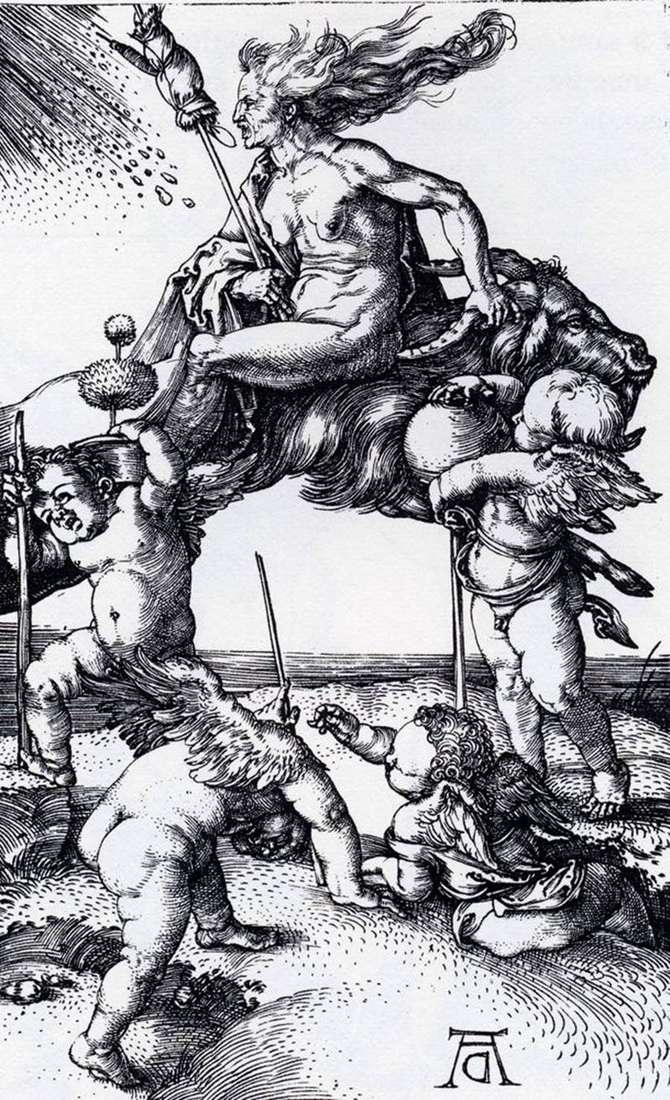
Engraving “The Witch”, here Durer depicted an ugly witch who hurries to the Sabbath. It rushes through the air on a mythical animal, in which the trunk of a goat and a fish tail are bizarrely combined. In her hand she holds a spinning wheel or spindle, with the other hand she holds onto the horn of the goat. Moreover, he sits with his back to the head of the goat. This is a common posture in the “witch” theme.
The witch rushes swiftly, this is emphasized by the hair flying and shading in the upper right corner. This witch is already a middle-aged woman, ugly. Age has left traces on both the face and the figure. The whole appearance is disgusting.
Even the educated people of that time believed that girls and women enter into an alliance with the devils and become witches. With amazement we read the bloodthirsty lines from the poet and the scientist Murner: “Well, at her fire, and light it! And if you do not find the executioner, I will not let her go, I’d better set the fire myself!”
The 15th century in Germany was full of witch burning processes. In each city bonfires burned, on which unfortunate women were burned, accused of witchcraft and relations with the devil. Durer could easily have been a witness.
The descriptions of the fires on which the “witches” were burned were preserved in the Nuremberg chronicles. Once in Schwabach, a neighboring town, a young girl, a wonderful beauty, was built at the stake. Before the fire, they announced her confession that she was a witch and a witch.
“No,” she exclaimed, “I am not guilty of anything! I confessed, because I was terribly tortured! I did nothing wrong.” The crowd around the fire shuddered. But the executioners did not take pity. When she was already seized by the flame, she continued to read the prayers loudly, according to the chronicle, “as far as the voices in the smoke and fire were enough, insisting that she was full of Christian faith.”
“Witch’s theme” was popular in European painting of that period, many outstanding artists portrayed witches. Albrech Durer also had to take into account the tastes of customers, while he did not depict a coven or a penalty.
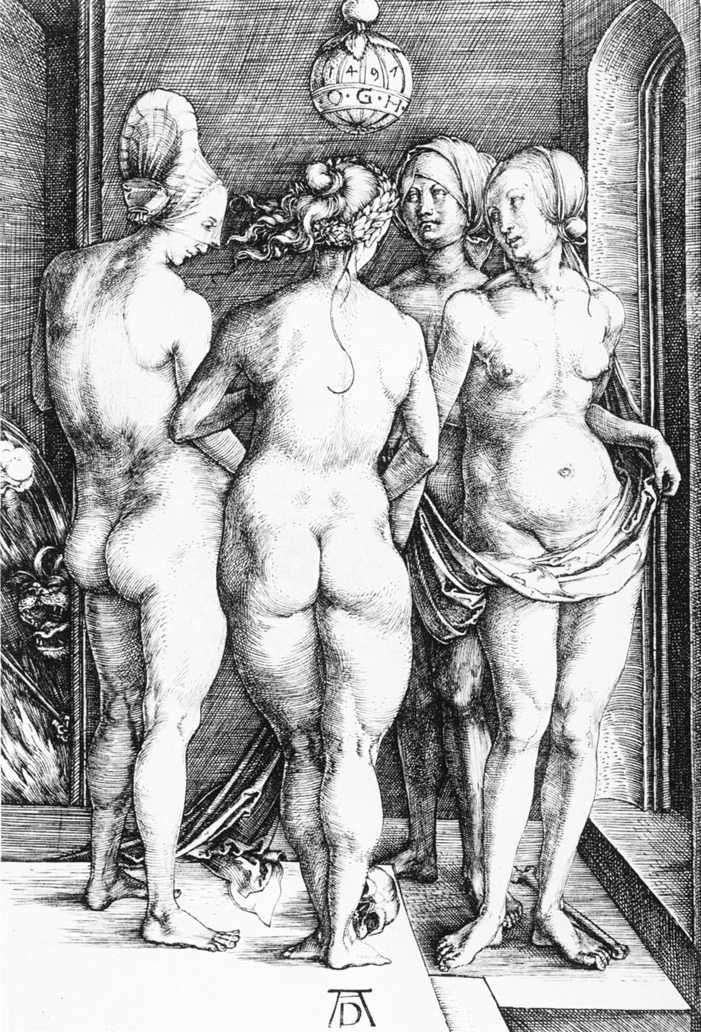 Four witches by Albrecht Durer
Four witches by Albrecht Durer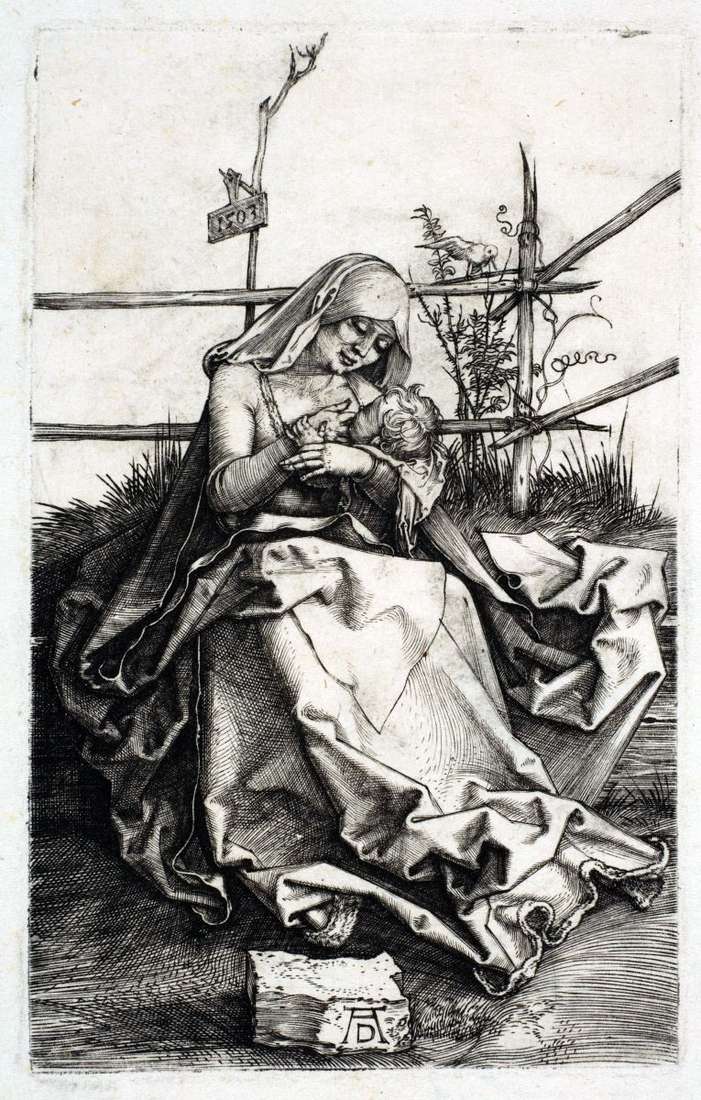 Maria on the bench from the turf by Albrecht Durer
Maria on the bench from the turf by Albrecht Durer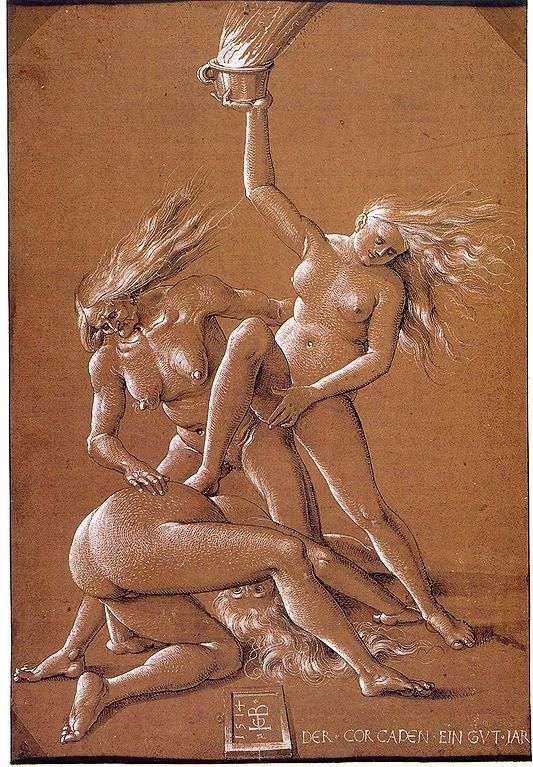 Three Witches by Hans Baldung
Three Witches by Hans Baldung The Apostle by Albrecht Durer
The Apostle by Albrecht Durer Portrait of Berhart von Riesen by Albrecht Durer
Portrait of Berhart von Riesen by Albrecht Durer Four Angels of Death by Albrecht Durer
Four Angels of Death by Albrecht Durer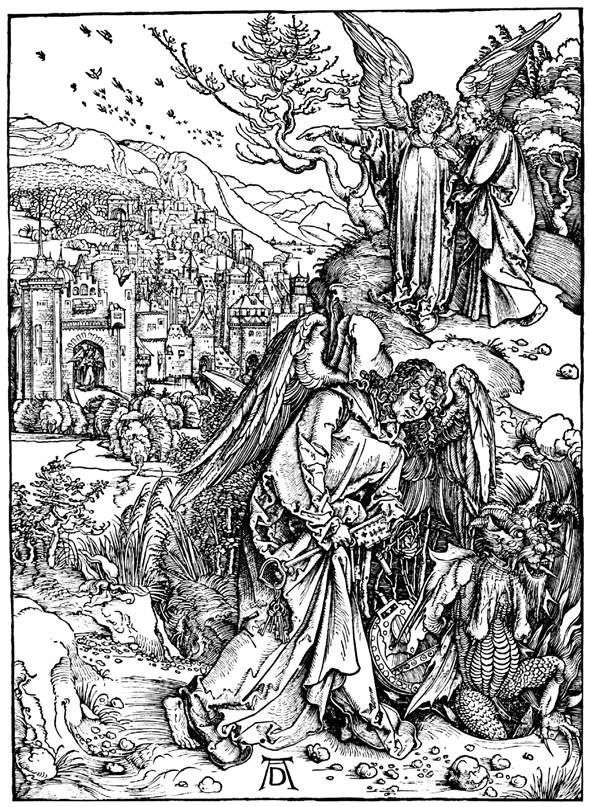 An angel with a key from Hell. Engraving by Albrecht Durer
An angel with a key from Hell. Engraving by Albrecht Durer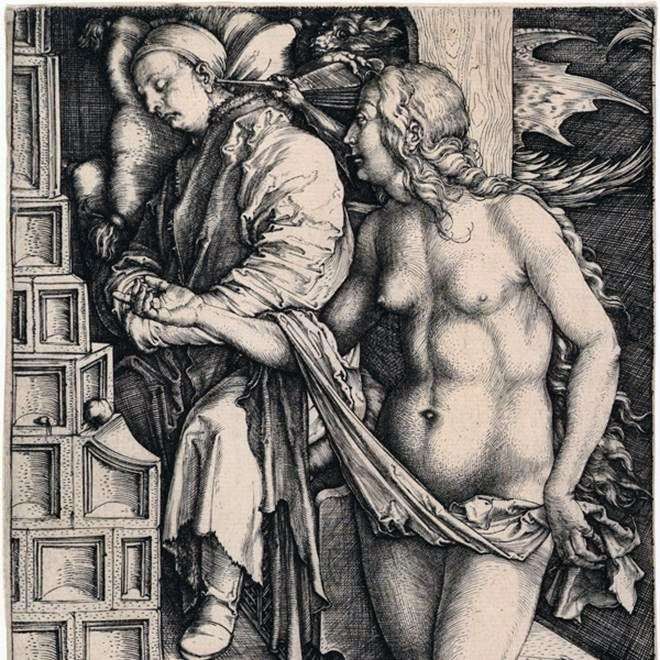 Seduction lazy. Engraving by Albrecht Durer
Seduction lazy. Engraving by Albrecht Durer